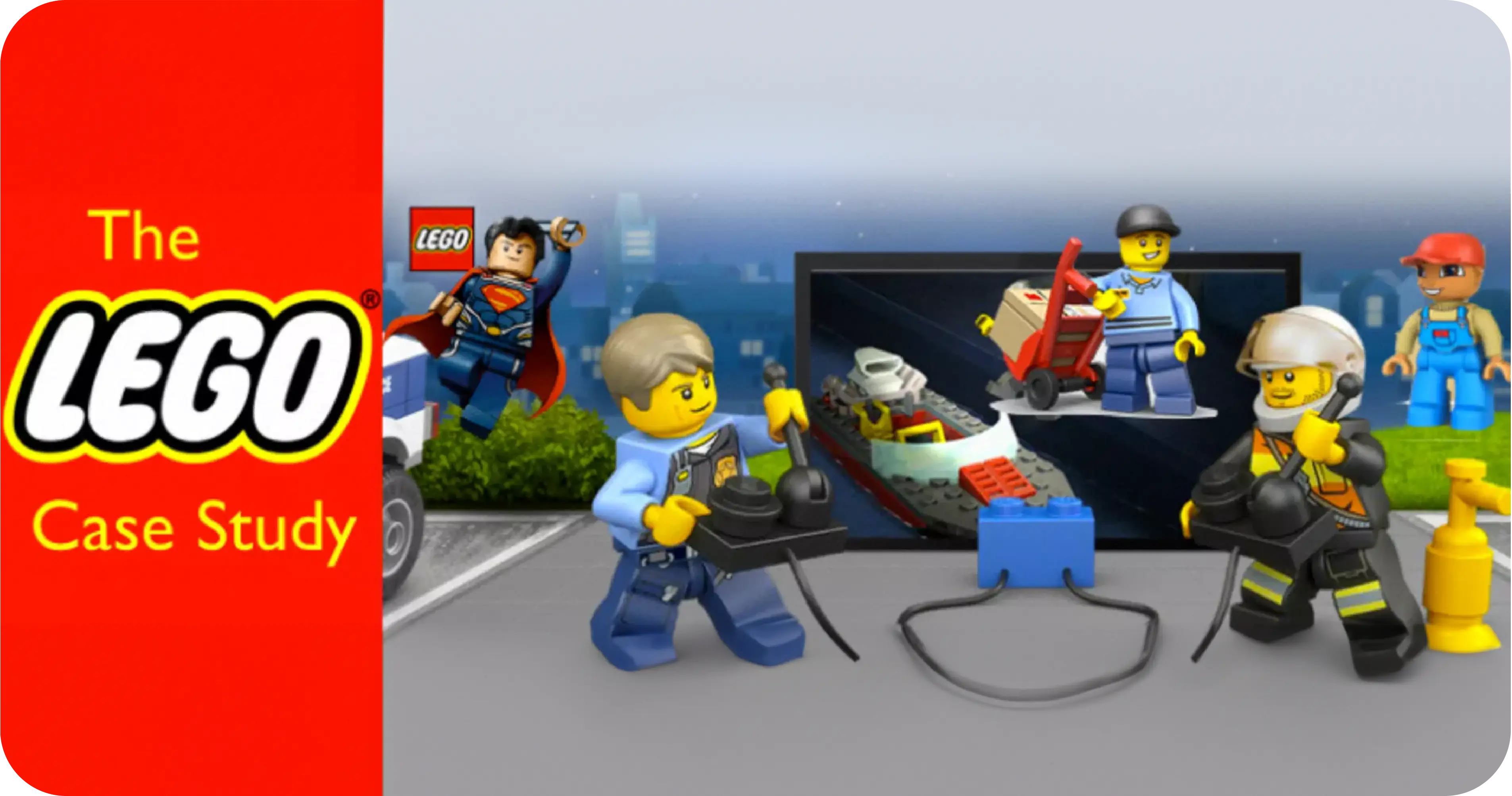Employers guide to enhance problem-solving skills for business success

Problem-solving skills empower individuals and teams to tackle challenges effectively and make informed decisions that boost productivity and drive growth. Whether dealing with complex issues or making strategic choices, mastering problem-solving can give your company a competitive edge and distinguish it from the competition.
In this article, we will delve into the essence of problem-solving skills and outline a methodical approach to tackling challenges creatively. We’ll also explore how employers and leaders can enhance these soft skills among team members and review interesting case studies to illustrate effective problem-solving in action.
Definition of problem-solving skills:
Problem-solving skills encompass both a skill set and a process that enable individuals to address challenges in a logical and systematic manner. These skills are crucial in the workplace, where time constraints and collaboration with others are often involved. A person proficient in problem-solving can quickly recognize, analyze, and resolve issues efficiently and effectively.
As a skill, problem-solving includes several key components:
- Critical thinking: This is the capacity that helps you to evaluate information, arguments, and evidence logically and objectively, facilitating sound judgment.
- Analytical skills: This skill is the ability to break down complex problems into manageable parts, understand their relationships, and identify the root causes.
- Creativity and innovation: Creativity is to think outside the box, generate various approaches to problems, and explore unconventional ideas.
- Research: The skill of gathering relevant data and information from various sources to evaluate the reliability as well as relevance of the information.
- Communication: Good communication skills enable you to clearly articulate problems, potential solutions, and the reasoning behind decisions, both verbally and in writing.
- Teamwork: Collaboration or teamwork is the ability to work effectively with others to solve problems, use diverse strengths, and be open to feedback and constructive criticism.
- Resilience and adaptability: This is the capacity that helps you to remain calm and focused under pressure, adapt to changing circumstances, and persist in finding a solution despite obstacles.

Why are problem-solving skills important in business success:
Businesses face a number of challenges every day. The success of any business largely depends on how quickly and effectively the team can address these challenges, keeping the company's interests in mind. The ability to navigate pressing problems and find practical solutions can increase productivity, customer satisfaction, and profitability.
Companies that cultivate a problem-solving culture are more likely to innovate and adapt to changing market conditions, giving them a competitive edge. Here are the key reasons why problem-solving skills are crucial for business success:
- Improved decision-making: Problem-solving skills enable individuals and teams to analyze situations, consider various solutions, and make well-informed decisions. This leads to better strategic choices that align with the company's goals and objectives, minimizing risks and maximizing opportunities.
- Enhanced efficiency and productivity: Efficient problem-solving helps businesses identify and address bottlenecks, inefficiencies, and operational challenges. By streamlining processes and optimizing resources, companies can reduce costs and increase productivity.
- Competitive advantage: Strong problem-solving skills foster creativity and innovation, allowing businesses to develop new products, services, and processes. This innovation can provide a competitive edge in the market, helping companies differentiate themselves and better meet customer needs.
- Adaptability: In dynamic markets, quick adaptation to emerging challenges is crucial. Problem-solving skills enable businesses to respond effectively to unexpected issues, such as market shifts or technological changes, ensuring long-term resilience and sustainability.
- Customer satisfaction: Problem-solving skills are essential for addressing customer concerns and resolving issues promptly. By effectively managing customer complaints, businesses can improve service quality, build stronger customer relationships, and enhance overall satisfaction.
- Risk management: Identifying and addressing potential problems can prevent minor issues from escalating into significant crises. Problem-solving skills enable businesses to foresee potential risks, develop contingency plans, and implement preventive measures, thus safeguarding the company's assets and reputation.
How to improve your problem-solving skills?
Problem-solving is a strategic approach to addressing challenges. It is an acquired skill that can be learned and refined through persistent practice. Here are key steps to help you effectively approach problems and devise appropriate solutions:
Identify and define the problem
It's essential to identify and define the problem to find the best solution. Albert Einstein rightly said, “A problem defined is a problem half solved.” This step involves two main components:
- Problem identification: The first step is recognizing and accepting that a problem exists. Ignoring or delaying action due to time constraints or a desire to avoid complications can lead to escalation. Acknowledging the problem's significance is essential for timely intervention.
- Defining the problem: Clearly outline the scope of the problem. This involves understanding the specifics of the issue, its root causes, and challenges. A well-defined problem provides a solid foundation for developing an effective solution.

Below are some questions which will help you figure out the problem statement:
- What are the challenges you or the team are facing?
- Is the problem recurring in nature?
- What is causing the problem?
- Who is affected by the problem?
- How is the challenge being handled?
- What are the limitations in addressing the problem?
For example, if your sales are declining, you must not change your marketing plan hastily. Instead, you need to understand the root cause of the sales drop. The decline could be due to various factors, such as the entry of new competition, shifts in market trends, or a competitor offering attractive discounts. Identifying the reason is important as it allows you to address the issue effectively.
Gather information
Collecting data and information about the problem is crucial for understanding its context and implications. This may involve extensive research, consulting experts, or gathering feedback from stakeholders. The more informed you are about the problem, the better equipped you will be to address it effectively.
Analyze the problem
Break down the problem into its constituent parts and analyze their correlation. Identifying patterns, trends, and potential causes helps pinpoint the root causes of the issue. This process is essential for developing a targeted solution.
Generate multiple solutions
Leverage your team's diverse expertise to brainstorm a list of possible solutions. Consider various approaches and evaluate the pros and cons of each. This process helps you explore multiple options and identify the most viable solutions. Involving diverse perspectives can lead to more comprehensive and innovative solutions.
Evaluate the resources required, potential risks, and alignment with your goals before selecting the best option. Choose the solution that effectively addresses the problem while minimizing risks and maximizing benefits.
Implement the solution
Once a solution is selected, the next step is implementation. Develop a detailed action plan outlining the necessary steps, resources, and timeline for execution. Assign roles and responsibilities to ensure clear communication among all involved parties to facilitate smooth implementation.
Monitor and review the results
After implementing the solution, it is also necessary to assess its effectiveness. Gather feedback and measure the outcomes against the expected results. If the solution does not fully resolve the problem or new issues arise, make adjustments to improve its effectiveness.
Case study: Starbucks approach to solving a problem
In 2008, the popular global coffee chain Starbucks experienced declining sales and profits, primarily due to overexpansion, loss of brand identity, and economic downturns. Despite its popularity and customer loyalty, the brand struggled to maintain a premium coffee culture.

This case of Starbucks demonstrates the importance of correctly identifying and addressing the root causes of business challenges.
The challenge: The rapid expansion of Starbucks led to an oversaturation of stores, often within close proximity to one another. This resulted in a dilution of the brand's exclusivity and a decline in the quality of customer service.
The economic recession also reduced consumers' disposable income, leading to fewer customers willing to pay premium prices for coffee. The company also faced increasing competition from other coffee chains and fast-food outlets offering cheaper alternatives.
The problem-solving process adapted by Starbucks:
In 2008, the former CEO, Howard Schultz, returned to lead the company. He identified the problem's core issues and conducted a thorough analysis of the company's operations, customer feedback, and market conditions.
Defining the problem: The key issues were identified as:
- Overexpansion leading to market cannibalization.
- Declining customer experience and quality.
- Increased competition and economic pressures.
Strategic actions: Schultz undertook several strategic actions to address these problems:
- Store closures: Starbucks announced the closure of 600 underperforming stores in the U.S., focusing on locations that were cannibalizing sales from more successful stores. This helped to streamline operations and reduce costs.
- Refocusing on core values: Schultz emphasized returning to the company's core values, including high-quality coffee and a unique customer experience. He reintroduced the original standards for coffee preparation and store ambiance.
- Employee training: Starbucks temporarily closed all U.S. stores for a day to retrain baristas on the art of making espresso. This move aimed to ensure consistency in product quality and reinforce the company's commitment to excellence.
- Innovation and product expansion: Starbucks diversified its product offerings, including healthier food options and premium products like Starbucks Reserve. Starbucks also introduced new technologies, such as the mobile app and loyalty program, to improve customer engagement and convenience.
Results: The changes brought about a significant turnaround for Starbucks. The strategies implemented by Howard Schultz not only helped Starbucks regain its brand status but also became profitable.
- Focusing on core values and customer experience increased customer satisfaction and loyalty.
- The strategic store closures and operational efficiencies improved profitability.
- By embracing innovation, Starbucks attracted new customers and re-engaged existing ones.
How to improve problem-solving skills in team members
Problem-solving in the workplace often requires significant teamwork. As leaders, employers must demonstrate strong problem-solving abilities to set a positive example and build trust within their teams. Developing effective problem-solving skills among team members is crucial, as complex challenges often require making numerous smaller decisions to address larger issues. The team's ability to proactively identify, analyze, and resolve problems is critical to the organization's success.
A good leader can guide the team in improving their problem-solving skills and fostering collaboration during challenging times. Here are some team-building activities that are both fun and effective for enhancing these essential skills:
- Brainstorming sessions: Encourage open discussions where team members can share ideas and solutions without judgment. This helps develop creative thinking and explore various potential solutions.
- Role-playing scenarios: Model real-world problems and assign roles to team members to practice decision-making and problem-solving in a controlled environment.
- Escape room challenges: These activities require teams to work together to solve puzzles and find solutions under time constraints, thereby enhancing critical thinking and collaboration.
- Case studies and group analysis: Analyze case studies of past projects or hypothetical situations. Discuss what went wrong, what worked, and how the team could approach similar issues differently in the future.
- Problem-solving workshops: Conduct workshops that focus on specific problem-solving methodologies, such as root cause analysis or SWOT analysis.
- Feedback and reflection sessions: After completing a project or solving a problem, hold sessions where the team reflects on the process, discusses what was learned, and identifies areas for improvement.
Case study: LEGO’s good problem-solving skills:
The famous Danish toy company LEGO faced a severe financial crisis in the early 2000s. Due to declining sales and heavy losses, it was almost on the brink of bankruptcy. This case study highlights the power of effective problem-solving and teamwork in overcoming business challenges and achieving success.

The challenge:
LEGO, known for its iconic building blocks, started facing tough competition with the rise of computers and electronic games. In an attempt to remain relevant and competitive, the company strayed from its core product, leading to over-expansion and a lack of focus. LEGO ventured into unrelated markets, such as theme parks and clothing stores, diluting the brand's identity and draining resources. Additionally, the company lost touch with its core customer base—children and families—resulting in products that failed to resonate with them.
The problem-solution process:
Defining the problem: LEGO identified the core issues as a lack of focus on their primary product, inefficient operations, and a disconnection from their customer base.
Research and analysis: The new CEO, Jørgen Vig Knudstorp, and his team conducted a detailed analysis of LEGO's business operations, product lines, and market trends. They gathered feedback from customers, employees, and retailers to understand the brand's strengths and weaknesses. The research revealed that the company had lost its connection with its core audience and was producing costly and unappealing products. Additionally, many inefficiencies were identified in the supply chain and production processes.
Solution: LEGO implemented a series of strategic actions:
- Product line focus: They discontinued unprofitable product lines and refocused on core products, such as the LEGO City, LEGO Star Wars, and LEGO Technic sets.
- Operational efficiency: The company restructured its supply chain, optimized production processes, and relocated manufacturing to more cost-effective locations. This reduced costs and improved efficiency.
- Customer engagement: LEGO invested in understanding its customers better by launching LEGO Ideas, a platform where fans could submit their own designs for potential production. This initiative not only engaged the community but also provided insight into popular trends and interests.
Result: Through effective teamwork in problem identification, research, analysis, and strategic actions, LEGO achieved:
- The brand's market position as a leading toy brand was reinstated.
- Profitability and operational success.
- Increased customer loyalty and engagement.
FAQ's on problem-solving skills
1. How can I highlight problem-solving skills on my resume?
Showcase your ability to identify and solve problems by including specific examples of challenges you faced and the creative solutions you implemented.
2. Why is effective communication important in problem-solving?
Clear communication helps in summarizing the problem, conveying potential solutions, and ensuring all stakeholders understand the steps of the process.
3. What steps should I take when solving a problem in a job interview?
Start by identifying the problem, discuss your approach to finding the underlying causes, and explain the series of steps you would take to solve the problem.
4. How can technical skills complement problem-solving abilities?
Technical skills can help you identify the root cause of the problem more efficiently and decide on the best course of action to solve problems quickly and effectively.
5. How do employers look for problem-solving skills in candidates?
Employers seek problem-solvers who are not afraid to ask questions, gather information, and use multiple perspectives to develop solutions to problems.
Role of Business Communications and Prezent:
Business communications play a crucial role in problem-solving. Whether through speeches or any written communication like a report or presentation, well-articulated communication makes complex information easier to understand, study, and address effectively.
Prezent, a smart business communication and presentation platform, is designed to enhance this aspect for enterprises. It significantly boosts your team's problem-solving skills by streamlining communication, fostering collaboration, and providing insights through data visualization.
Streamlined communication:
Prezent helps you build clear and concise presentations in 50% less time. Here’s how it supports streamlined communication:
- Pre-designed templates: This helps create a quick presentation that aligns with your brand elements and ensures consistency.
- Compelling storyline: With over 1000 storylines, you can structure your content to tell a compelling, coherent story that engages your audience.
- Targeted messaging: Tailors your presentations to meet stakeholders’ needs, preferences, and expectations with hyper-personalized content.
Enhanced collaboration:
Problem-solving often requires diverse input. Prezent makes it possible for multiple users to collaborate on a presentation simultaneously in real-time. This enables:
- Real-time feedback: Team members can provide immediate feedback and suggest edits, fostering a dynamic and interactive problem-solving process.
- Shared knowledge: Centralize all relevant information and insights in one place, making it easier for team members to access and contribute.
Effective data visualization:
Prezent’s extensive repository of 35k plus slides quips you with powerful data visualization tools, which help analyze and interpret data more effectively. This helps you:
- Better analysis: Visualize data trends, patterns, and anomalies to identify root causes and potential solutions.
- Informed decisions: Use compelling visuals and data-driven insights to support decision-making, reducing the probability of errors.
Learn more about Prezent and discover how it can effectively enhance your team’s problem-solving skills and business communication. Schedule a demo at your convenience to explore the platform in detail. Alternatively, you can start a free trial anytime to experience Prezent firsthand.



.avif)








